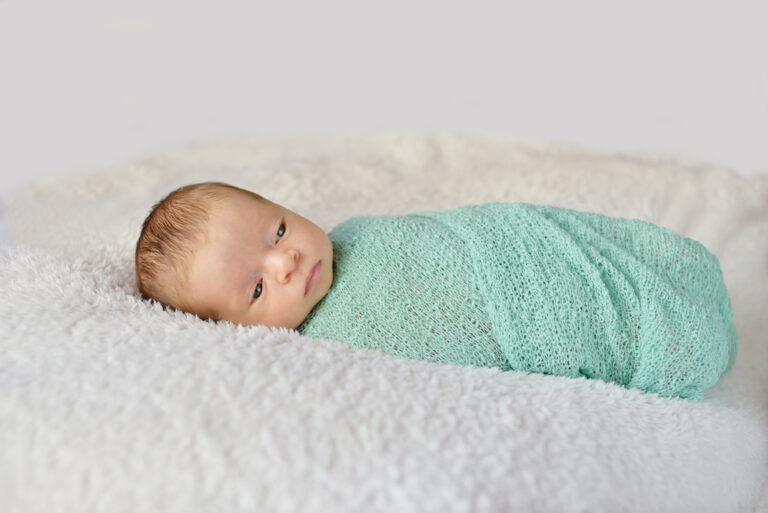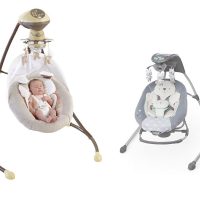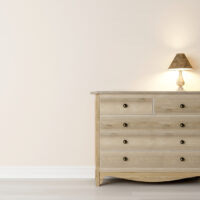If your baby naps well, he or she will get a head start in life. Proper baby naps are essential for learning, overall health and for the body’s development.
Naps and nighttime sleep are closely related. If your baby has problems napping during the day it is also likely that she doesn’t sleep well at night.
In this article, I will give you the four cornerstones of a baby nap so that your infant or toddler can be happy and relaxed all day.
But, why are naps so important?
Well, several studies (including this one from the Australian National University) show that naps promote your baby’s ability to learn words and create memories.
Other studies have shown that naps are important for the body’s development. One study (from Emory University, and University of Virginia) identified that growth in body length was linked with not only increases in total daily sleep hours but also as the number of naps.
It couldn’t be more clear: Make sure your baby is napping properly!
Read on to learn how easy it is to put the cornerstones of a nap in place and to build a solid foundation for your baby’s nap.
Baby Nap Times by Month
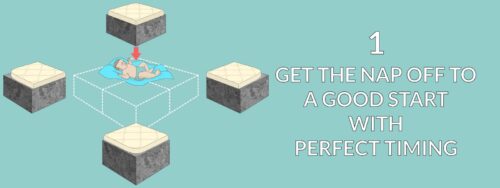
Great naps always start with the right schedule from your side.
You have probably noticed that it is harder to put your baby to sleep when she is overtired.
Why is that?
An overtired baby has raised levels of the body’s stress hormones, such as adrenaline and cortisol. This keeps your baby awake, turning nap time into a struggle. You and your baby miss out on a great opportunity to bond and cuddle.
In other words, you need to be ready and prepared as your baby gets tired and nap time approaches.
It is also important to make sure the naps happen at the right time of the day. Babies should not nap too early in the morning nor too late in the afternoon.
Early morning naps are a sign that your baby isn’t sleeping enough at night and naps in the late afternoon will lead to problems with the nighttime sleep.
If your baby naps late in the afternoon she will have lower levels of the sleep hormone melatonin in the evening. Melatonin is very important for sleep. The result will be that your baby stays up later, takes longer to be put to bed and has a shorter night’s sleep. These are all bad things that you want to avoid.
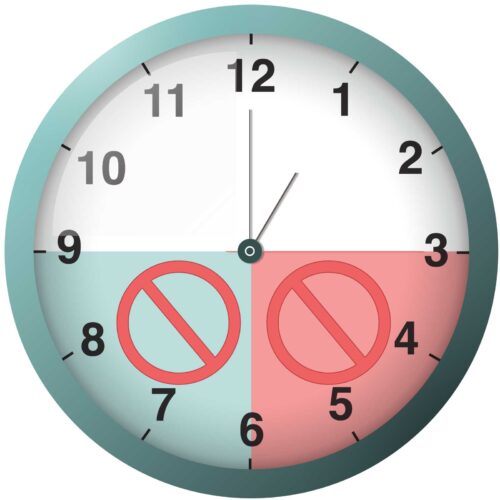
Signs Baby is Ready for a Nap
The first thing to do is to make sure you understand your baby’s signs of tiredness.
If you pay close attention to your baby’s behavior, the signs of tiredness will quickly become obvious to you.
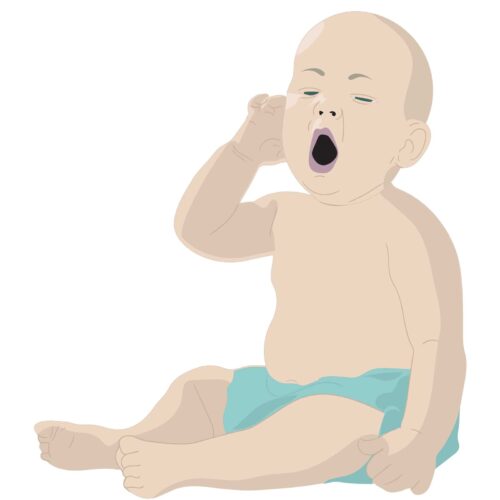
Here is a list of signs of a tired baby. Once you observe two or three of these signs, then it is time to consider a nap.
- Pulling ears
- Rubbing eyes
- Yawning
- Fluttering eyelids
- Falling over more
- Crying
- Not interested in food
Baby Sleep Schedule Calculator
I have created a simple tool to help you create a napping schedule for your baby or toddler. It is really easy to use.
Simply select your little one’s age (in months) and the time he or she normally wakes up in the morning.
| Wake up time: | |
| Baby's Age: |
With your schedule created, grab a pen and a piece of paper and write it down.
How long should baby be awake before the first nap?
We start by considering the nighttime sleep.
Below is a table with the minimum number of hours that your baby should stay awake in the morning. If your baby regularly needs a nap before that time, then you need to try to improve her nighttime sleep. It could be an earlier bedtime in the evening or keeping your baby asleep for longer in the morning.
| Baby’s Age | Minimum time before your baby’s first nap |
|---|---|
| 0-4 months | Nap on demand |
| 5-7 months | 1.5 Hours |
| 8-12 months | 2 Hours |
| 13-24 months | 2.5 Hours |
You also need to figure out the deadline for your baby’s afternoon naps.
The best way to do this is to keep a simple sleep diary. Write down the following for a week or two.
- Length of the afternoon nap.
- Record when your baby woke up after their afternoon nap.
- Record when your baby fell asleep for nighttime sleep.
- How easy it was to put your baby to bed for nighttime sleep.

Mother with a sleep diary
Keep a simple Sleep diary then, compare the nap times with how easy and how late the night bedtime was.
You should then be able to figure out a deadline beyond which you should not let your baby nap.
E. g. When my daughter Molly was 18 months old, her deadline was 3 p.m. If she slept later than that, then we knew we would have problems putting her to bed before 8 p.m.
Once you have your schedule adjusted, it is important that you stick to it in order to maintain the routine. Your baby will need some time to get used to the nap times so stick to it for at least a week before you make any big adjustments.
Where should baby nap during the day?
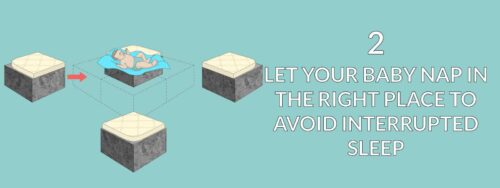
Daytime naps are, by nature, more likely to get disturbed than nighttime sleep. The sun is up and the rest of the world is awake so it is important that you let your baby nap in the right place.
It is often very hard for your baby to go back to sleep if she wakes up in the middle of a nap. She will then miss out on parts of the sleep cycle, resulting in a tired and unhappy baby.
So where should my baby nap?
There are many good options to consider. I recommend that you try to stick to one place when you are at home and one for when you’re on the go. That way, you can keep your baby’s naps time as consistent as possible.
The best option for baby naps at home is your baby’s crib or baby nest.
When you are out and about, a pram or stroller with a flat bassinet inside, is the most likely place for your baby to nap. Younger babies can also sleep very well in a sling on your belly.
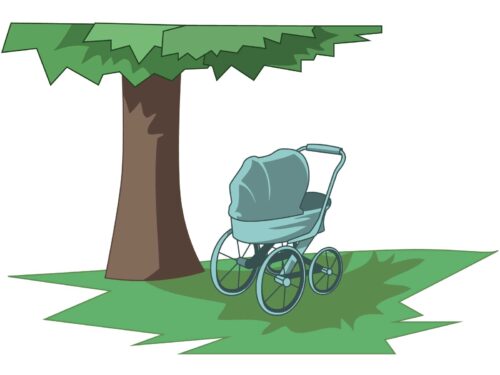
Regardless of whether you are in your house or in the mall, there are basically three things that can ruin your baby’s nap:
- Light
- Noise
- Temperature
 Baby should nap in a partially light room
Baby should nap in a partially light room
Make sure that your baby is away from direct sunlight. If she sleeps inside, then pull the curtains to keep the sun away. If she sleeps outside in the pram, then place the pram in the shade and cover the pram with a thin muslin cloth (if using a cloth, make sure there is good air circulation around your baby).
It doesn’t have to be completely dark around your baby, as it should be when sleeping at night. In many ways, it is beneficial for your baby to sleep with some daylight. This helps to keep the circadian rhythm undisturbed.
Try to make sure the lighting conditions are consistent. Flickering lights such as the sun shining on and off behind scattered clouds can easily wake your baby.
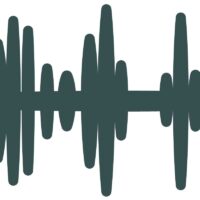 White noise for baby naps
White noise for baby naps
Noise is not always a bad thing. Many babies sleep better with background noise, like in a cafe or with the rain on pounding a roof.
The problem occurs when there is a sudden noise. A door slamming shut, a motorcycle going past or a ringing mobile phone are all things likely to disturb your baby’s nap.
You can’t control the rest of the world so how can you protect your baby sleep from noise during sleep?
The best way is to create your own background noise or white noise. The background noise will help to drown out any sudden sounds. It also helps your baby to fall back asleep if she wakes up.
White noise can be found in many places. You can turn on a fan in your baby’s room, play white noise from your phone (I use Sound Sleeper) or use a cuddly toy that plays white noise.
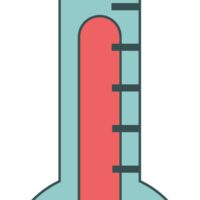 Room temperature for baby naps
Room temperature for baby naps
If it is too warm, your baby will struggle to sleep.
Your baby’s small body is much more vulnerable to overheating and dehydration compared to an adult. It doesn’t take long for a baby to go from warm to overheated to a very dangerous situation.
The scary thing is that if your baby is too warm then she might not wake up to let you know.
A cold baby, on the other hand, will wake up and let you know that she is too cold.
In other words – a slightly cooler environment is preferable. It is much easier to put on some extra clothes or use a thicker sleeping bag if it is too cold.
The optimal temperature for good baby naps is 18-20 C (64-68 F).
If it is warmer than that, then make sure the air is circulating well. Never point a fan directly towards your baby as this can cause dehydration. Check regularly and make sure your baby is not sweating or the chest feels hot to the touch.
How long should baby nap?
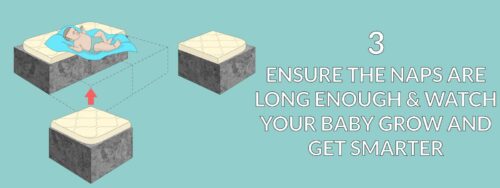
Your baby’s sleep cycle is different from an adult’s sleep cycle. Depending on your baby’s age, one cycle is approximately 45-60 minutes long.
There are two phases of sleep:
- Light sleep
- Deep sleep
The light phase comes first and lasts for about 25 minutes. This is the phase when your baby’s brain develops. The blood flows to the brain and, because of this, the baby’s sleep is light, meaning that she is very easily startled and woken up.
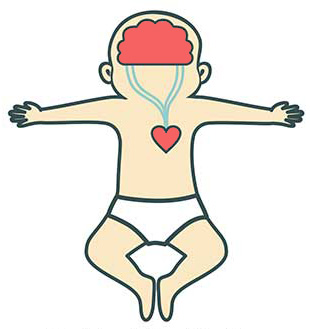
During the deep sleep phase, most of the blood is instead directed to the baby’s body so that the organs and body can grow.
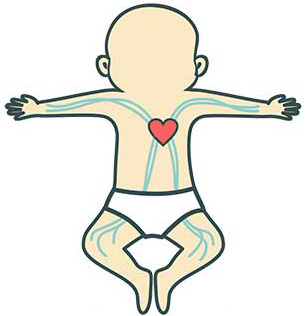
Which phase do you think is the most important?
The answer is both. Your baby needs to get through a whole sleep cycle, which includes both light and deep sleep.
The problem is, there is a transitional phase between light and deep sleep, during which time your baby is close to being awake. This is a hurdle many babies struggle to overcome. Instead of completing a whole sleep cycle, they wake up after about 25-30 minutes when the light sleep phase is over.
If this happens to your little one, then you should focus on helping her transition into deep sleep.
Let me show you what you can do:
Give your baby something to sleep with
This applies to babies that are older than 6 months.
A transitional object can be any soft object that your baby or toddler brings to bed for comfort. It is often called a blankie, blanket or lovey.
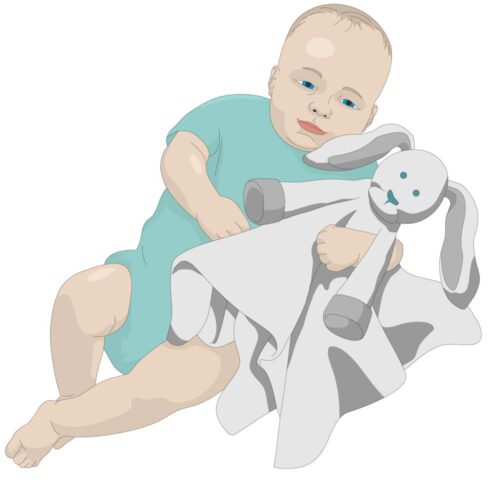
Such objects work by offering comfort and soothing your baby. Once your baby is used to the object, then the familiar feeling it provides will often help your baby to transition into deep sleep.
Make sure your baby is able to easily pull the blankie away from her face so that there is no risk of suffocation. You know your baby and her abilities best so, if it doesn’t feel safe with a blankie in bed then wait another month or so before introducing it.
Use White Noise or a Sound Machine
As described earlier, white noise can be very effective at soothing a baby that is about to wake up.
Many white noise apps or cuddly toys stop the noise after about 30 minutes; just as you need it the most. Try to find a noise that will play for at least 40 minutes so that it stays on until your baby is properly in the deep sleep phase. A fan is a very good option when your baby is napping at home.

Help baby fall back to sleep
Both a transitional object and white noise can take some time for your baby to get used to, so, in the beginning, you need to be there.
Many babies regularly wake up after the same amount of time, usually around 30 minutes. If you know when your baby is going to wake up then try to be near her at least 5 minutes before that.
As she starts to stir, gently touch your baby while shushing. This should help your baby transition into deep sleep and should provide another 20-30 minutes of napping.
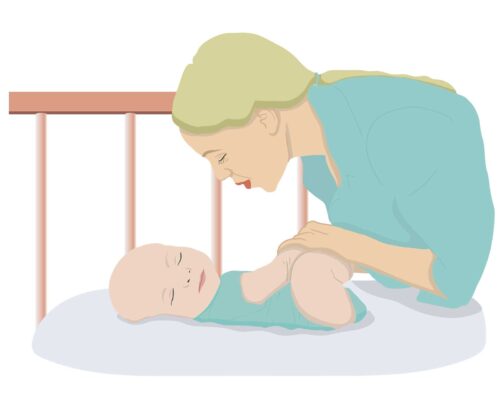
Another great way to help your baby learn to transition into the deep sleep phase is to place her in a sling for nap time. The closeness to you should offer enough comfort for her to go back to sleep.
Relax and Recharge your Batteries when You know that Your Baby is Napping Safely
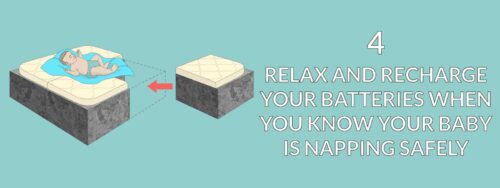
This is the most important cornerstone.
Babies must be safe when they’re taking a nap. If your baby is less than a year old, the risk of SIDS, Sudden Infant Death Syndrome, is significant, so it is very important that you take the steps to make sure that this risk is reduced as much as possible.
Baby Naps are not just the time for your baby to rest and develop, it is also the time when you, the parent get the chance to recharge your batteries.
You will not have the energy to be an amazing parent to your little one if you are not rested. So, make your rest a priority!
Of course, winding down and relaxing in the short time your baby naps can be hard. Relaxing is even harder if you worry about SIDS. So, take all the necessary steps to make sure your baby is as safe as can be while napping.
The American Academy of Pediatrics has issued recommendations for a safe sleeping environment and I have summarized some of them for you below.
You must, however, do your own research and make sure that you take the necessary steps to protect your baby from SIDS and other dangers as much as possible.
SIDS recommendations for Baby Naps
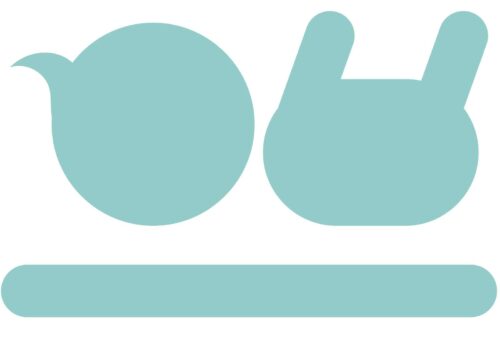 | Make sure your baby sleeps completely on the back until 12 months old. This is the safest sleeping position (baby with no medical conditions) for a baby younger than 12 months. Sleeping on the side or the belly is not considered safe. |
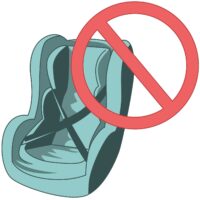 | No sleep in a seated position until the age of 4 months. Babies under the age of 4 months risk suffocation if they regularly sleep in a seated position, such as a car seat, stroller or even a sling. It is hard to avoid your baby sleeping in the car so make sure you are able to monitor your baby closely. Don’t do long journeys on your own since it is not safe for you to keep an eye on your baby while you are driving. |
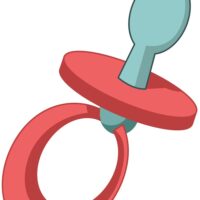 | Consider a pacifier Dummies have been shown to reduce the risk of SIDS so I advise giving one to your baby when it is time to sleep. |
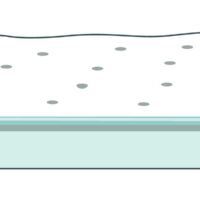 | Use a firm sleep surface that fits the crib perfectly. A mattress is firm enough when it does not conform to your baby’s head. You must make sure the mattress fits the crib perfectly, leaving lo gaps around the sides. |
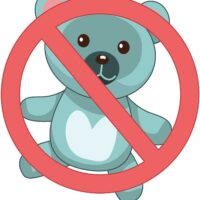 | Keep soft objects away. Soft objects, such as pillows, duvets and toys should not be present in your baby’s bed during the first year. Such items increase the risk of suffocation. |
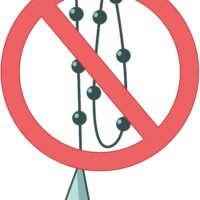 | No dangling cords. Make sure there are no dangling cords, such as electric wires or window blind cords hanging anywhere near your baby’s bed. These can easily strangle your little one. |
Additional Safety Recommendations
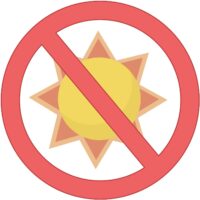 | Cot, crib or pram away from direct sunlight. Keep your napping baby away from direct sunlight and away from the window. |
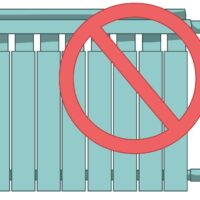 | Cot, crib or pram away from heat sources. Make sure your baby is a good distance away from heat sources, such as radiators, so that your baby doesn’t overheat. |
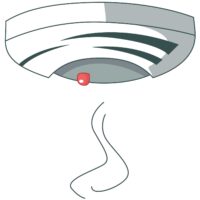 | Smoke detectors installed and tested. Make sure the smoke detectors in your house are in good working order. |
Conclusion
In this article, I have given you a solid foundation for good baby naps. We have looked at:
- The signs of a tired baby
- How to get the timing right
- We have created a schedule
- Where your baby should nap
- How babies sleep
- How to make baby naps long enough
- Safety when napping
You now have the knowledge to take the necessary steps to put the four “cornerstones” of great baby naps in place. Make sure you stay consistent and stick to the routines and schedule that you have established.
Your baby’s naps should improve within a week or two.
Leave a comment below and let me and other parents know how your baby naps.
